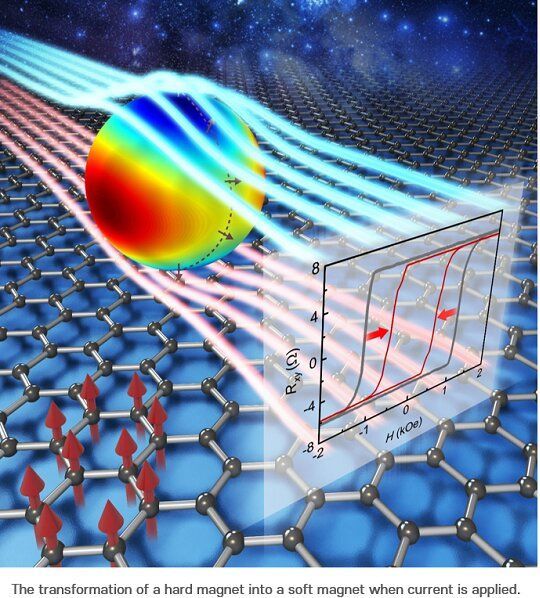Researchers at Pohang University of Science and Technology (POSTECH) and Seoul National University in South Korea have demonstrated a new way to enhance the energy efficiency of a non-volatile magnetic memory device called SOT-MRAM. Published in Advanced Materials, this finding opens up a new window of exciting opportunities for future energy-efficient magnetic memories based on spintronics.
In modern computers, the random access memory (RAM) is used to store information. The SOT-MRAM (spin-orbit torque magnetic RAM) is one of the leading candidates for the next-generation memory technologies that aim to surpass the performance of various existing RAMs. The SOT-MRAM may operate faster than the fastest existing RAM (SRAM) and maintain information even after the electric energy supply is powered off whereas all fast RAMs existing today lose information as soon as the energy supply is powered off. The present level of the SOT-MRAM technology falls short of being satisfactory, however, due to its high energy demand; it requires large energy supply (or large current) to write information. Lowering the energy demand and enhancing the energy efficiency is an outstanding problem for the SOT-MRAM.
In the SOT-MRAM, magnetization directions of tiny magnets store information and writing amounts to change the magnetization directions to desired directions. The magnetization direction change is achieved by a special physics phenomenon called SOT that modifies the magnetization direction when a current is applied. To enhance the energy efficiency, soft magnets are ideal material choice for the tiny magnets since their magnetization directions can be easily alterned by a small current. Soft magnets are bad choice for the safe storage of information since their magnetization direction may be altered even when not intended—due to thermal noise or other noise. For this reason, most attempts to build the SOT-MRAM adopt hard magnets, because they magnetize very strongly and their magnetization direction is not easily altered by noise. But this material choice inevitably makes the energy efficiency of the SOT-MRAM poor.










Comments are closed.